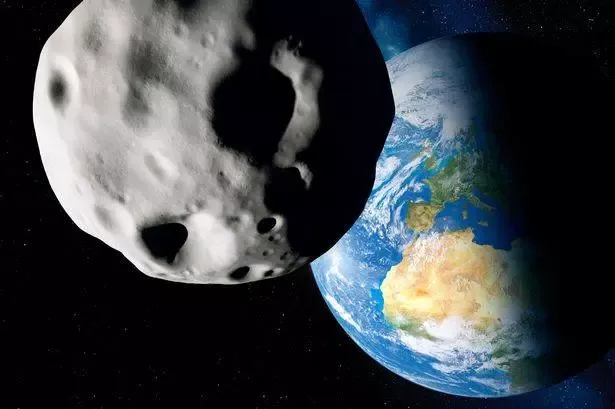NASA tracking huge 'potentially hazardous' 2km wide asteroid hurtling towards Earth
NASA is tracking a huge 'near miss' asteroid estimated to be between 1.7km and 4km wide – the size of a small island. The 19,500mph object is classed as 'potentially hazardous' and could damage Earth if it were to collide, although it is not expected to.
NASA is tracking an enormous asteroid hurtling towards Earth, the American space agency has confirmed.
On Wednesday 29th April, asteroid 1998 OR2 is set to pass by Earth at speeds of up to 19,500mph.
The giant space rock is estimated to be between 5,905ft to 13,451ft wide, which is between 1.7km and 4.1km wide.
NASA’s Centre for Near Earth Objects classes 1998 OR2 as “potentially hazardous” as it will come within a certain distance to Earth.
Thankfully, the space rock is expected to miss the planet by a distance of 0.04205 astronomical units (AU) or 3,908,791 miles when it passes at 9.56ET or 13:56GMT.
To some, that might seem a long way off, but in astronomical terms, that can be classed as a near-miss.
If the asteroid does hit Earth, it is big enough to cause major cataclysmic events, such as an earthquake or a tsunami.
The European Space Agency is also keeping a close eye on the giant rock, and tweeted about the visitor last week.
It said the asteroid is believed to be 16 times further than Earth is from the Moon and confirmed it will pass by on Wednesday.
The ESA said: "Wow. Asteroid 1998 OR2 tumbling through space seen by the Arecibo observatory.
"They confirm the space rock is ~ 2 km in diameter and rotates once every 4.1 hours.
"1998 OR2 will safely make a close approach of Earth on 29 April, at its closest being 16 x further than the Moon".

Astronomers are currently tracking nearly 2,000 asteroids, comets and other objects that threaten our planet.
On Wednesday alone, five asteroids, including the mammoth rock will pass Earth, each travelling at different speeds.
As well as 1998 OR2, four others – 2020 HK6, 2020 HW2, 2020 HJ6 and 2020 H63 – will glide past.
According to Nasa, a "Near Earth Object" or NEO is a term used to describe "comets and asteroids that have been nudged by the gravitational attraction of nearby planets into orbits that allow them to enter the Earth’s neighbourhood".
Earth hasn't seen an asteroid of apocalyptic scale since the space rock that wiped out the dinosaurs 66million years ago.